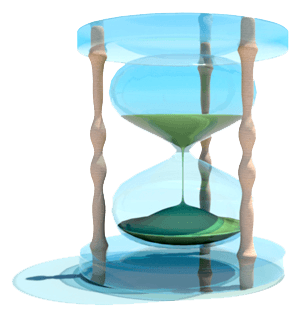Posts by Scorca
Fighting Against Extension-Based Back Pain
Who is at risk?
Many people who live with chronic back pain find comfort and relief when extending their spine. But a certain subset of the population- mostly those who spend a lot of time standing, may suffer from too much extension; baristas, teachers, mechanics, and athletes are among the most at-risk demographic. This pain and discomfort, known as extension intolerance, can be identified by changes in your posture, including:
- Excessive lordotic curve in the lumbar spinal segment
- Anterior pelvic tilt, which makes your butt stick out like Donald Duck
These two factors combine to destabilize your spine and wreak havoc, especially in the lower back. So how do we ease extension intolerance?
Protecting Your Spine On the Job
You need to look out for your back at the office
It is one of the most dangerous environments for your spine. The incessant sitting, poor posture and repetitive stress of office tasks puts many of us at risk for spinal misalignment, dysfunction and sets us on a course for premature spinal degeneration. The only defense your back has in this scenario is your proactivity- have you made the choice to take daily action to look out for your spine in your office work? If not, we urge you to make some small changes that can save your back a whole ot of trouble down the line.
Living a Low-Pressure Lifestyle
Why make life harder than it needs to be?
Almost everything about adult life is conducive to tension, whether it be mental or physical. Our jobs and families often keep us too busy to focus on the activities that help us reduce tension, leaving us at the mercy of a stress-cycle that spares no one. This stress-cycle certainly does not spare our spines- everything about tension spells spinal dysfunction. But neglecting our spines because we are too busy, or because we are lazy, is certain to make your life harder than it needs to be. Here are our tips for maintaining a high-level of spinal health despite the rigors of daily life.
Why Runners Should Prioritize Pelvic Stability
Running represents a challenge for spinal health
Core stability has been and always will be a top priority at our practice in Fremont. But a lesser known way to proactively protect your spine is to simultaneously prioritize pelvic stability. Multiple joints connect at the pelvis, including the sacroiliac, iliofemeral and pubic symphysis. These joints facilitate the movement of the lower body and are also involved in stabilizing the transference of forces between lower body and the spine; weakness in these joints translates to weakness at the base of your spine, leading to misalignment and injury. This is particularly crucial for runners: if these joints are unable to stabilize the excessive movements and shock of each stride, you will effectively be left with a topsy-turvy structure at the base of your spine. A further consideration is that runners shift all the weight of their body from foot to foot; one side of the body is supporting the weight of the entire body. Runners who lack stability in the pelvis are causing a disproportionate amount of stress to each side of their body during this transfer.
Psoas Power: A Little Known Muscle in the Back Pain Game
Introducing the Psoas: a make or break muscle in lower back pain
The psoas, along with the gluteus maximus and the piriformis, is one of the three primary muscles responsible for connecting the spine to the lower body. These muscles support a crucial intersection in the body and they are often implicated in lower back pain. Let’s take a look at the psoas in a little more detail. The psoas attaches the lumbar vertebrae to the femur, by way of the iliacus muscle. It creates a natural pull on the lumbar vertebrae which helps form the lordotic curve that gives your spine strength and balance; this curvature is crucial in your spine’s ability to support the weight of your upper body. The psoas is heavily activated during standing and walking, which is why a sit-heavy lifestyle is so bad for it.
Find Your Performance Flow with Chiropractic
Athletes must be able to trust their bodies
So what does trusting your body truly mean? Confidence in your body is determined by being secure in the knowledge that the muscles and structures involved in a certain sport can be exposed to exceeding levels of stress without breaking. As an athlete, you are working constantly to improve your baseline of strength and mobility; when it comes time to ask your body for that extra ounce of performance, all you have is the faith that you’ve done enough to set yourself up for it. This is the performance flow that all athletes are looking for- the perfect balance of circumstances that helps them get to the next level. Chiropractic helps you find that performance flow! Read on to find out how.
Yoga is Nature’s Medicine for Back Pain
Don’t forego the power of yoga!
At Scorca Chiropractic Center, we are all for using yoga to prevent and manage back pain. Yoga and chiropractic line up on quite a few of their core tenets including a natural and holistic approach to healthcare, mindfulness, and a focus on relaxation. In the whole spectrum of exercise, yoga is one of the most effective disciplines for people who have back pain. As with all exercise, however, you need to know which moves are beneficial and which moves will actually worsen your condition. Read on to find out how to effectively use yoga to account for back pain.
Interconnected and In Pain: A Roadmap of Lower Back Pain
I have a strong core so why do I still have back pain?
The core is so much more than people give it credit for; it is a network of muscle groups that are active in just about every move you make throughout the day. No matter what your primary activities are, the core is being subject to constant pressure; even when you are sitting perfectly at rest, your core is active in trying to maintain some semblance of posture to support the spine. Too many people misunderstand the core as a primary mover- as a group of muscles that initiates action, or produces force. While this is a function of the core, it is an auxiliary function and training your core this way doesn‘t necessarily help your spine!
Stop the Stiffness: Nightly Neck Exercises
How chronic is your neck pain?
Stiff, sore necks are no longer the exclusive domain of the office worker- with a cell phone in seemingly everyone’s hand, neck pain is more prevalent than ever. To make things even worse, forward head syndrome is more pervasive than ever: the way we interact with every electronic device often involves us subconsciously holding our heads forward and increasing the amount of downward pressure on our spines. In summation, our jobs, habits and recreational activites are putting a serious pain in our neck. So what are we to do?
Rehabilitative Exercise For Posture Deficiencies
How can we fix posture with exercise?
We’re so glad you asked! Exercise, along with stretching and chiropractic care, is the most effective way to go about addressing postural problems. At our office in Fremont, we are seeing a startling rise in the number of people who come in with poor posture. It is evident from the moment they walk in the door- even their walking and standing posture is suffering as a result of too much sitting! People always focus on diet, exercise and sleep as the main methods for exerting control over their wellbeing, but we would argue that posture forms an equally important fourth dimension to this group! Below we look at a few of the most common postural shortcomings and how exercise can help you overcome them.



